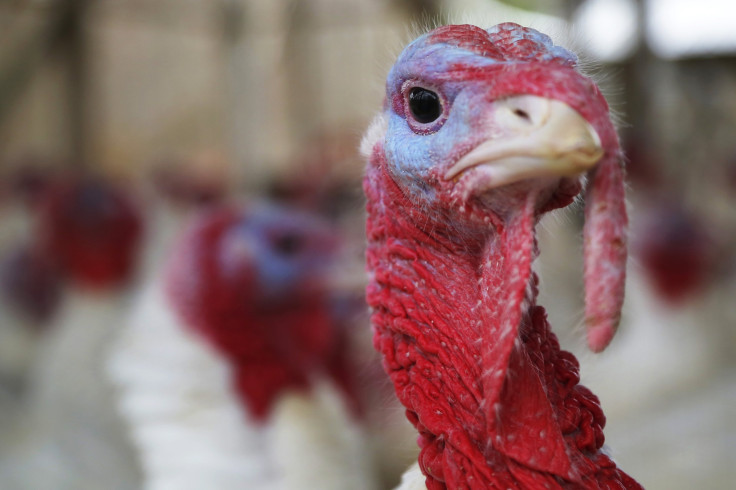Thanksgiving Turkey 2014: What Is The Difference Between Dark Meat And White Meat?

Every Thanksgiving someone usually questions what the difference is between the two types of turkey meat they’re consuming in massive quantities. “Dark meat” is concentrated around the legs of turkeys and chickens while the breasts are made up of “white meat.” The two have distinctly different textures.
The color of your meat comes down to the concentration of myoglobin, a protein that delivers oxygen to muscles that need sustained energy. Myoglobin and the blood vessels that the protein moves through is what give dark meat its red color. Those muscles are concentrated around the legs of turkeys and chickens and not in the breast because they travel on foot and do not fly much, according to the Library of Congress. A turkey or chicken’s breast muscles are “white” because they're needed only for short bursts of movement, like when escaping a predator. The muscles of a turkey’s breast get their energy from glycogen.
The two kinds of muscles are often grouped into “fast-twitch” and “slow-twitch” muscles, with dark meat made up of the former and white meat, the latter. As you can probably infer, the fast-twitch muscles in a turkey’s breast are for quick movement. Turkeys burst away in a sort of gliding flight from danger using their wings, and breast muscles, to propel them. Geese and other flying birds use their breast muscles to flap their wings and fly, so are mostly dark meat.
The higher concentration of myoglobin and blood vessels means dark meat is usually more nutritious than white meat, while white meat is lower in fat, making it a favorite of dieters, according to Chicken Farmers of Canada, a group that lobbies for chicken farmers and sets standards for its members.
Most human muscles are made up of a combination of dark and white meat. The same goes for cows and other mammals. The concentration of each kind of muscle fiber in any given area of the body is based on what sort of job that muscle does. The more active the muscle, the more fast-twitch fibers will be present. Let the SciShow on YouTube explain:
© Copyright IBTimes 2024. All rights reserved.












